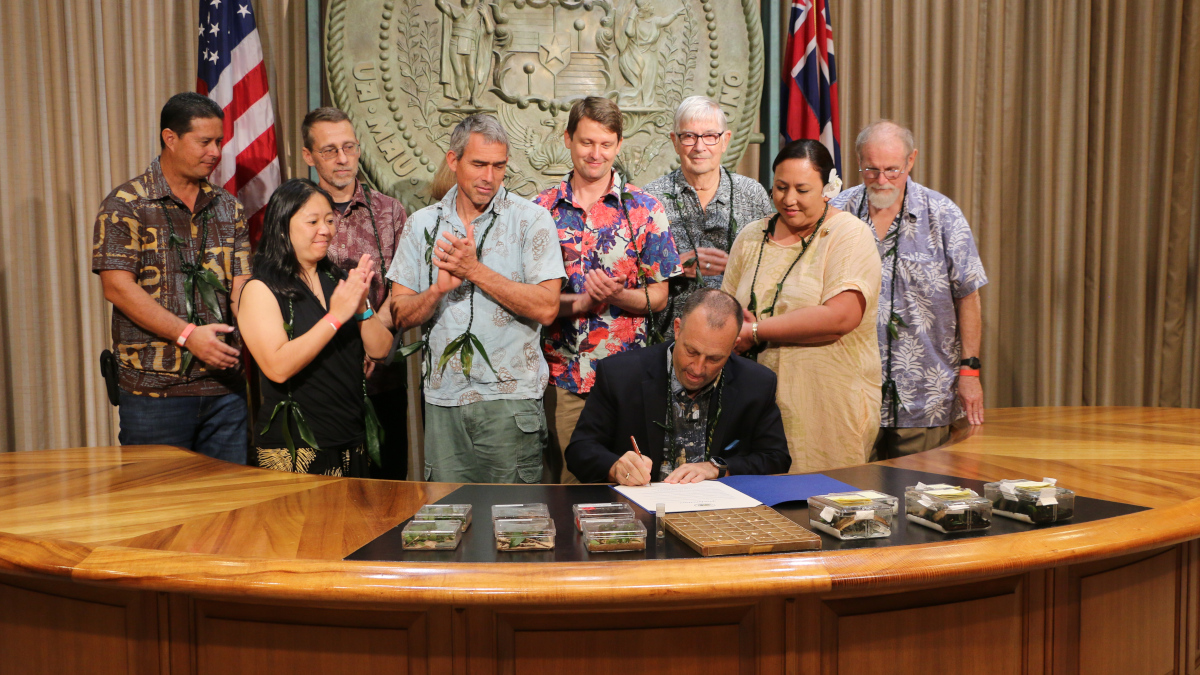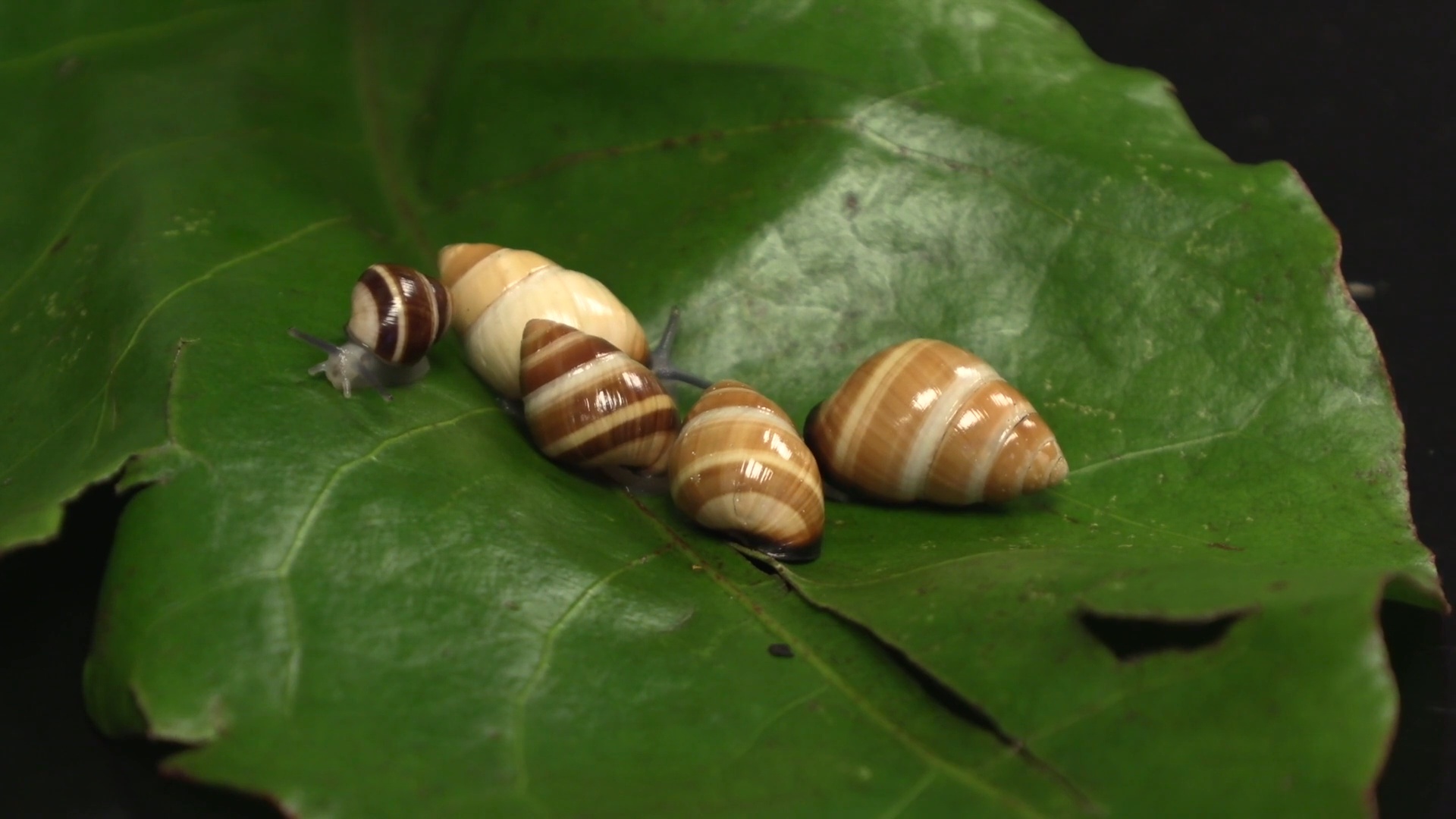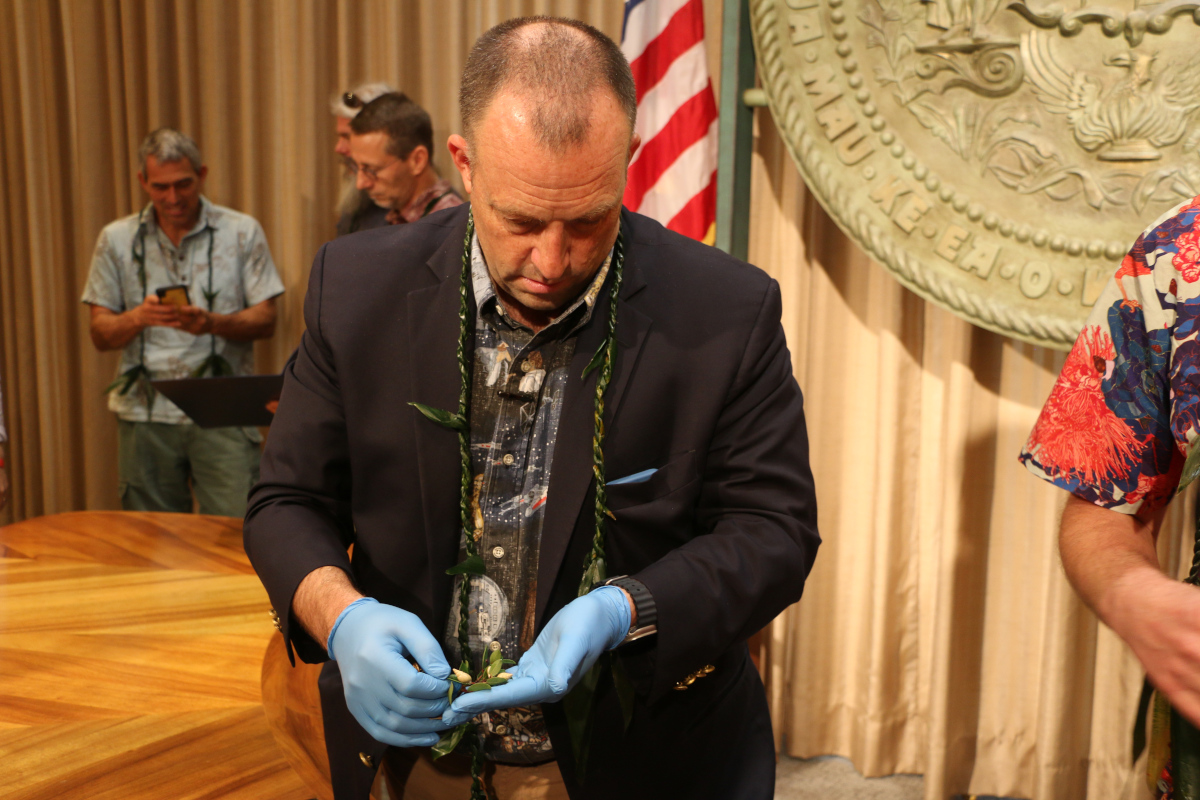(BIVN) – Governor Josh Green on Thursday issued a proclamation, declaring 2023 to be the Year of the Kāhuli, in honor of the colorful native tree snails that inhabit Hawaiʻi.
From the Hawaiʻi Department of Land and Natural Resources:
Considered the jewels of the forest and revered in Hawaiian cultural history, kāhuli, like many native species, are threatened by climate change, predators like rats and cats, introduced invasive snails, chameleons, and human encroachment into their original territories.
In the proclamation Gov. Green signed at the State Capitol this afternoon, he notes how kāhuli once had a population of 750 different species. Sixty percent have gone extinct from the forests they’ve called home for millions of years, with whole families already gone from the islands.
At a snail lab operated by Dr. David Sischo of the DLNR Division of Forestry and Wildlife (DOFAW), 40 species of rare native snails from five different islands are all fed and kept safe, until such time they can be returned to their forest homes. Mirroring a snail’s pace, it’s a slow and laborious process. The state snail lab is in addition to those at the Honolulu Zoo and Bishop Museum.
“We think of the lab as an emergency room for snails that are on the very brink of extinction,” Sischo explained. “We take really good care of them, increase their numbers, and then put them back out on the landscape in protected areas.”
Typically, a population needs to be in the hundreds before researchers consider moving them out, getting them past what Sischo calls the danger zone of extinction. Last year, more than 7,000 snails from the three labs were released into the wild.
For such tiny creatures, certain species have an average life span of twenty years, but they take five years to reach maturity, and then only produce one to five offspring each year.
Unlike garden snails like the Rose Wolf snail, our native snails are critical to the overall health of native ecosystems and serve as “canaries in the coal mine,” a reference to the early warnings they provide. “As go the snails, so do many other species. When snail populations decline you can be sure other species of plants and animals are not far behind,” Sischo said.
“In Hawaiian traditions, snails sing,” said DLNR First Deputy Laura Kaakua. An account of Reverend Barnacle from 1874 describes hundreds of kāhuli on a single tree, and their movement over leaves in every tree of the forest created the grandest but wildest music, as if from hundreds of Aeolian harps, wafted to me on the breezes. “Kāhuli are featured in our stories, hula and chants, and they represent voice in Hawaiian culture. We don’t hear the kāhuli anymore, but perhaps we could with a widespread effort to protect and steward our native forests,” Kaakua continued.
Sischo and his team brought several species of the colorful native snails to today’s proclamation signing, while the Bishop Museum team brought some of the less colorful and less known native snails that are equally important and threatened.
“I’m visited today by some of the frontline warriors in the efforts to save kāhuli. A fundamental part of what makes Hawai‘i so special is the environment around us,” Gov. Green said. “Many of our plants and animals were here long before people, and that includes our kāhuli and this is why it’s so important to do everything we can to save them.”
Of the remaining land snails, 100 or more species will likely go extinct in the next decade without increased research and conservation action.
“We are incredibly appreciative to partner with Gov.Green and our local agencies to increase awareness of our endangered kāhuli, which includes all native Hawaiian land snails from the ground to the trees and the plain to the colorful,” said Dr. Norine Yeung, Bishop Museum malacology curator. “For more than a decade, we have been studying and conserving native Hawaiian land snails while working with partners such as the DLNR Snail Extinction Prevention Program to develop our respective conservation initiatives, including captive rearing programs, while fostering appreciation for this highly threatened fauna through educational outreach.”
The Year of the Kāhuli will be further celebrated and recognized with a series of events, including the debut of the film Kāhuli in April, a special brew from Honolulu Beerworks called Kāhuli Brewli also debuting in April, the second annual Kāhuli Festival at Bishop Museum in September, outreach activities, art contests, and more.




by Big Island Video News10:40 pm
on at
STORY SUMMARY
HONOLULU - Governor Josh Green issued a proclamation declaring 2023, the Year of the Kāhuli, for the colorful native tree snails that (used to) inhabit virtually every ecosystem across Hawaiʻi.